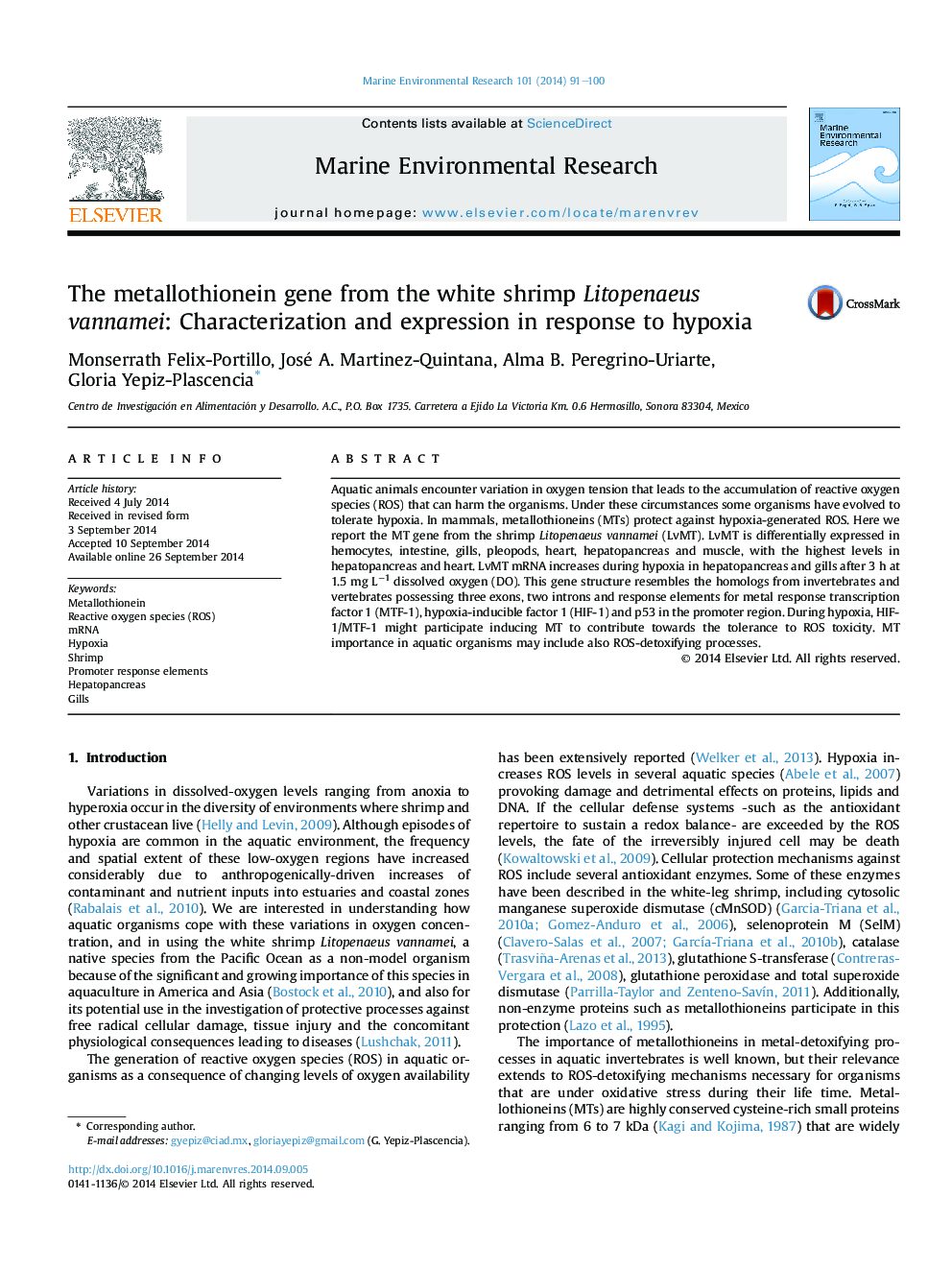| کد مقاله | کد نشریه | سال انتشار | مقاله انگلیسی | نسخه تمام متن |
|---|---|---|---|---|
| 4550747 | 1627581 | 2014 | 10 صفحه PDF | دانلود رایگان |

• We report the sequence of LvMT, the metallothionein gene from the white shrimp.
• The promoter region contains MTF-1, HIF-1 and p53 response elements, amongst others.
• The LvMT gene has tissue-differential mRNA expression in 7 tissues.
• LvMT expression rapidly responds to short-term hypoxia in hepatopancreas and gills.
• Appropriate use of crustacean MTs as metal biomarker should be analyzed in the light of this findings.
Aquatic animals encounter variation in oxygen tension that leads to the accumulation of reactive oxygen species (ROS) that can harm the organisms. Under these circumstances some organisms have evolved to tolerate hypoxia. In mammals, metallothioneins (MTs) protect against hypoxia-generated ROS. Here we report the MT gene from the shrimp Litopenaeus vannamei (LvMT). LvMT is differentially expressed in hemocytes, intestine, gills, pleopods, heart, hepatopancreas and muscle, with the highest levels in hepatopancreas and heart. LvMT mRNA increases during hypoxia in hepatopancreas and gills after 3 h at 1.5 mg L−1 dissolved oxygen (DO). This gene structure resembles the homologs from invertebrates and vertebrates possessing three exons, two introns and response elements for metal response transcription factor 1 (MTF-1), hypoxia-inducible factor 1 (HIF-1) and p53 in the promoter region. During hypoxia, HIF-1/MTF-1 might participate inducing MT to contribute towards the tolerance to ROS toxicity. MT importance in aquatic organisms may include also ROS-detoxifying processes.
Journal: Marine Environmental Research - Volume 101, October 2014, Pages 91–100